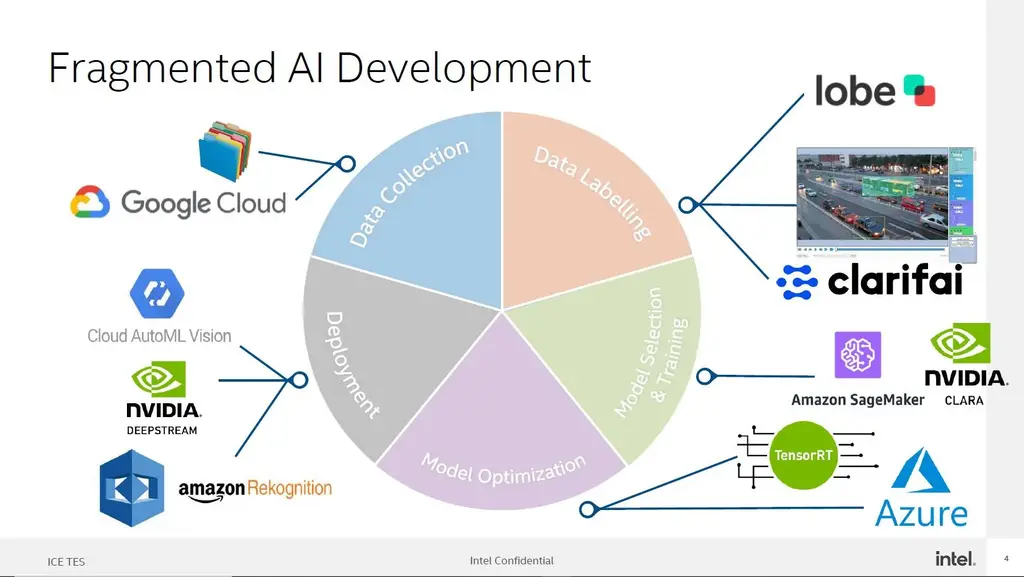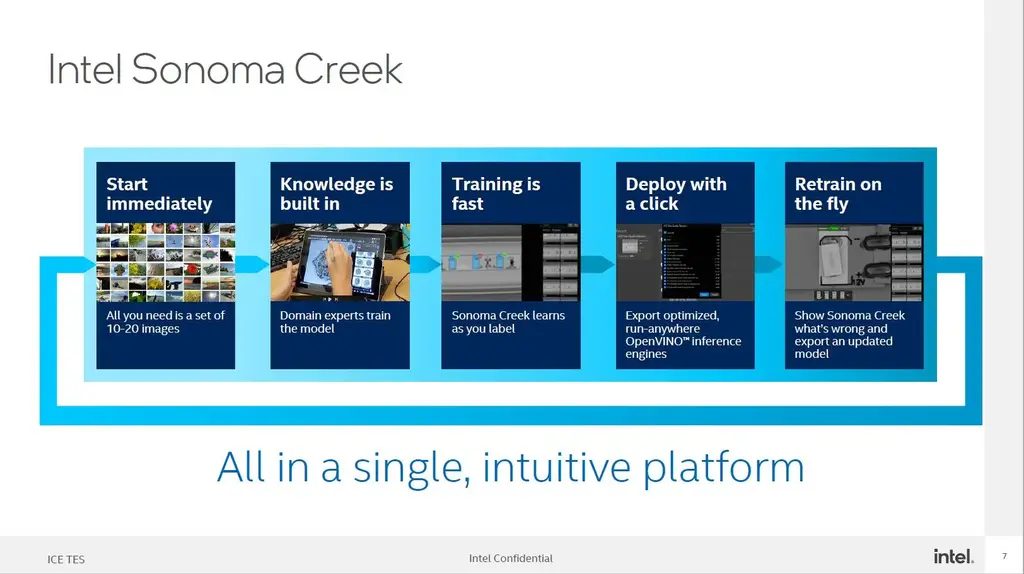Citing internal documents shared by the register, a foreign technology media, Intel plans to sell a software platform that promises to simplify and accelerate the training of artificial intelligence models for computer vision. The software, codenamed Sonoma Creek, will be launched this fall.

The semiconductor giant plans to sell the software by subscription or authorization as part of a new initiative by the x86 giant to promote chip sales through increasingly stable commercial software products. Intel also believes that Sonoma Creek can promote the use of its free openvino software toolbox for artificial intelligence reasoning.
Intel uses Sonoma Creek as an "end-to-end artificial intelligence development platform" to simplify computer vision model training for subject experts without data science experience.

The chip maker believes Sonoma Creek will benefit a number of industries. This includes manufacturing, where computers can monitor assembly lines and look for defects, and healthcare, where computers can detect abnormalities in medical imaging. Other industries mentioned include smart agriculture, smart city, retail and video security.
In an introduction, Intel said that Sonoma Creek brings together five important steps of artificial intelligence model training that are said to be scattered across multiple services into a "single workflow". The five steps are data collection, data tagging, model selection and training, model optimization and deployment.

Sonoma Creek uses pytorch and tensorflow frameworks to start training computer vision models, requiring only 10 to 20 pictures or a video. Then users annotate the data using Intel's so-called "intelligent assistant", which helps Sonoma Creek learn and improve the accuracy of the model.
Once enough data is annotated, Sonoma Creek will automatically train the model and make predictions, and users will approve or edit these predictions to improve the accuracy of the model.
After that, the user exports the model and uses the original framework of the model or Intel's openvino toolkit for reasoning, which optimizes the model for various Intel hardware (including CPU and GPU).